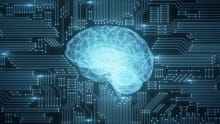Fuelling adaptability: L&D framework to ensure human adaptability
Get Set Learn Read similar articles

Learning is now a strategic HR function that ensures human adaptability, employee upskilling and relevance to the changing business climate. Employees’ learning expectations have evolved with the emergence of personalized experiences. Immersive learning environments with relevant content and multimodal training must complement the flexibility that comes with today’s evolved roles and responsibilities. Here is how organizations can meet that as:
The pillars of today’s L&D strategy
During the pandemic, employees learned how to work differently and grow differently i.e. it was digital centric and self-directed. Organizations also invested in learning technologies and initiatives such as collaboration and communication, virtual team challenges, digital workspaces and virtual collaboration, the real question that still lurks around is, “Has this ensured that the workforce adapts to evolved business models?” This can be assessed using the Maturity Framework for Digital Economy. As the organization evolves through the framework, the HR strategy becomes more adaptive and the workforce becomes more agile, resulting in stronger business performance.
The starting point for each organization is to identify where it stands:
- Early adopters: Learning and talent management are considered disparate processes and HR tends to react and support business needs by driving compliance. The culture is hierarchical and does not drive engagement.
- Managed: Pathways between learning and talent management begin, and HR starts pursuing more proactive business alignment. More executive interest in employee engagement emerges.
- Transforming: Learning and talent management start to converge with better tools, such that employees gain more accountability to steer their development and career. A more people-centric philosophy starts to get established.
- Continuous: This is an engaged employee culture with rapid response to change. Compelling and integrated learning and talent UX drives high participation, such that HR becomes a workforce architect of advance strategies and tools.
- Accelerating innovation: This is a self-developing ecosystem wherein world-class personalized UX heightens engagement. Sophisticated strategies fuel business adaptation, with a highly sought after culture.
An organization can assess their stage by looking at certain indicators of adaptability such as people-centric culture, HR’s role and people strategy, governance, user experience, technology infrastructure, funding, organizational alignment & curation strategy, elective participation and reporting & measurement.
How to drive adaptability through learning?
Once an organization assesses the current state, it must take steps to move to the next state. This is possible by:
- Making the learning experience personal and engaging: Setting up learning-related social communities for discussion and collaboration, and gamification are great means to drive “friendly competition”. Make sure that learning is personalized and it is aligned to the needs of employee. And that means offering multiple formats of learning that enable the employee to learn in the flow of work.
- Skills/competency gap analysis: Learning ties in with succession planning, so HR must continuously assess employee-fit for probable roles, get actionable recommendations and define parameters for career pathing. Thereafter, automating activity assignments and implementing-tracking coaching and mentoring tools will help fill skill gaps.
- Communicating to learners in an engaging manner: Organizations must help people explore their aspirations and understand where they stand, by defining a growth path for them.
- Planning IDPs: L&D must deploy career growth opportunities which will help employees align with business growth. Also, defining development objectives will give employees a sense that the organization believes in their growth.
- Technology streamlining: Creating a seamless user-experience may require companies to invest in their own data centres and state-of-the-art deployment models. More than an IT decision, ensuring usability, adaptability, experience, scalability and total cost of ownership is an HR priority.
Above all, having a commitment for innovation is imperative to learning success, because this is what will engage the learner and make learning sustainable.
Here’s what HR leaders who participated in a roundtable on the topic had to say:
1. Paneesh Rao, CPO, Mindtree
“In the virtual world – learning will be an individual’s responsibility to stay relevant”
2. Shubhayu Sengupta, Sr. VP & HR Head, HGS
Organizations really need to focus on doing competency (relevant to the organization and business context) based talent review for key and senior roles and skill mapping for the more operational roles and this two pronged strategy helps in conserving talent imperative for business growth and continuity. Supporting this would be a strongly articulate integrated learning framework (across process, functional and behavioural/ leadership elements) with learning journeys crafted for different roles to give clarity to an employee on how to build a career with an organization fuelled by growth through capability building
3. Anusha Mandavilli, SVP HR, Value Labs,
Integrating L&D into the performance management system, where the goals are set based on a well thought through career conversation between the employee and their manager is a first step towards a harmonious L&D strategy which will see 100% adaptability.
4. Bhanukumar Parma, Head HR, Ultratech Cement
The war for talent is going to intensify therefore Workforce Planning and Strategizing effective talent management, succession planning has become important. In the New Org. there should be space for Bots, AI, Automation, & Gig Workers.
5. Rabeen Singh, CHRO, Tata Advanced Systems Ltd
“The ever evolving futuristic capabilities to stay relevant require us to be lifelong learners. Custom content, shared experiences, and technology adoption are three key levers shaping the learning strategies of today.
Employees have access to thousands of courses, articles, videos, audio books to professionally develop themselves. With an explosion of learning content, it becomes imperative for HR/L&D teams to make learning more personalized and purposeful for our people.
6. Jai Balan, Head HR, Bharti AXA Life Insurance
Talent Management & Succession Planning needs patience, stability and consistency to take shape and deliver its desired objectives. And new Leaders need to have faith in prevailing Talent Management practices – succession planning decisions must be grounded in the organizational context and transformation/growth aspirations of the enterprise.
7. Mugdha Katakwar, L&D Professional, IIFL
A blend of technology, high quality content, right time engagement and data driven decisions is what is going to make the right kind of L&D Strategy.
8. Sivakumaran Ranganathan, Leader, DGM - Learning & Development, Sify Corp
In this post pandemic world, it is going to be highest levels of learning experience that will make a difference - be it learning modes, methodologies, reinforcements and the key behavioural areas that will like appreciative inquiry / self-reflection, conscious conversations, empathy, EI, resilience, growth mindset, mental and physical wellbeing. Variety is the key...L&D needs to be adaptive for effective adoption.
Organizations must marry succession planning with learning through customization. Learning reinforcements must be built around progressive elements such as appreciative reflection, emotional intelligence, empathy, wellbeing, growth mindset, etc. L&D must empower learners, only then can it bring learning & talent together. The need of the hour is to look at talent through a learning culture lens, aided with a human angle of a nurturing mindset.





